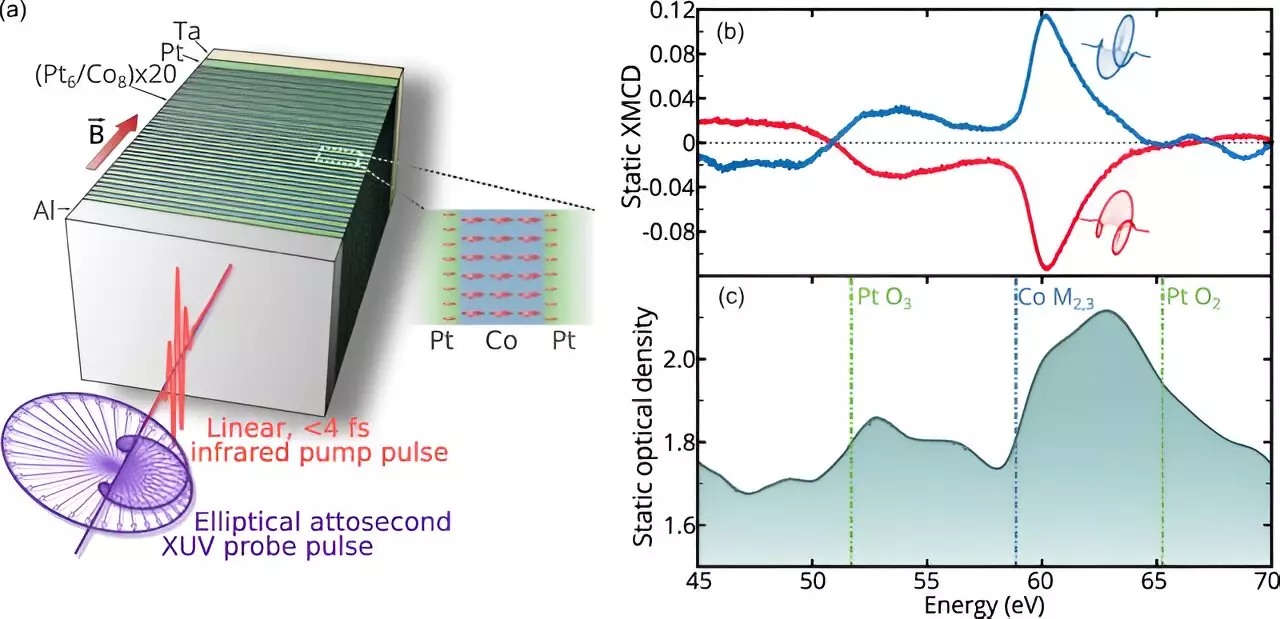The field of spintronics, which leverages the intrinsic spin of electrons for information processing, has made significant strides over the years. Spin currents, which represent a flow of electrons that are all aligned in their spin orientation, have the potential to revolutionize electronic devices by enhancing their speed and efficiency. In contrast to traditional electronic currents that rely solely on charge flow, harnessing spin currents can lead to devices with reduced energy consumption, paving the way for more sustainable technology solutions. A recent breakthrough by an international team of physicists highlights a new method for generating these spin currents directly through ultrashort laser pulses, promising to alter the future landscape of electronic device design.
In their study published in Physical Review Letters, the researchers innovatively coupled linearly polarized laser pulses with circularly polarized probe lasers to generate spin currents. Previous attempts to create spin currents typically involved indirect methods, where lasers would generate electrons whose spins were misaligned, leading to inefficient filtering processes to achieve the desired alignment. This inefficiency has long hindered the practical application of spintronics in electronic devices. However, the new study reveals a way to produce spin currents directly, enabling a more straightforward approach that eliminates the previously necessary filtering steps.
The authors constructed a sophisticated experimental setup involving an intricate target block composed of alternating layers of platinum and cobalt, each measuring merely a nanometer in thickness. By exposing this layered structure to a strong magnetic field oriented perpendicularly, they managed to align the spins of the electrons within both materials. Subsequently, the researchers emitted a sequence of ultrashort, polarized laser pulses aimed at the multilayered block, followed immediately by a circularly polarized probe laser. The result was an astonishingly rapid alteration in spin dynamics occurring within femtoseconds, demonstrating a speed that surpassed prior methodologies.
The findings from this groundbreaking research do more than simply demonstrate a new way to generate spin currents. The researchers noted that beyond affecting the spin states, the application of lasers induced a sudden shift in the magnetic ordering within the layers of the target block. Such changes in magnetic properties could significantly influence the design of future spintronic devices, allowing them to operate at higher efficiencies. Furthermore, the theoretical calculations carried out by the team validated their experimental results, reinforcing the reliability of their approach.
This novel approach to generating spin currents through ultrashort laser pulses not only presents a remarkable advancement in the field of spintronics but also underscores the potential for more efficient energy use in electronic devices. As the world moves towards more advanced and sustainable technologies, these findings could be pivotal in shaping the next generation of electronics, where speed and energy efficiency will ultimately define success. While challenges remain in translating this research into commercial applications, the groundwork laid by this international team marks a significant milestone in the journey of spintronic research.


Leave a Reply